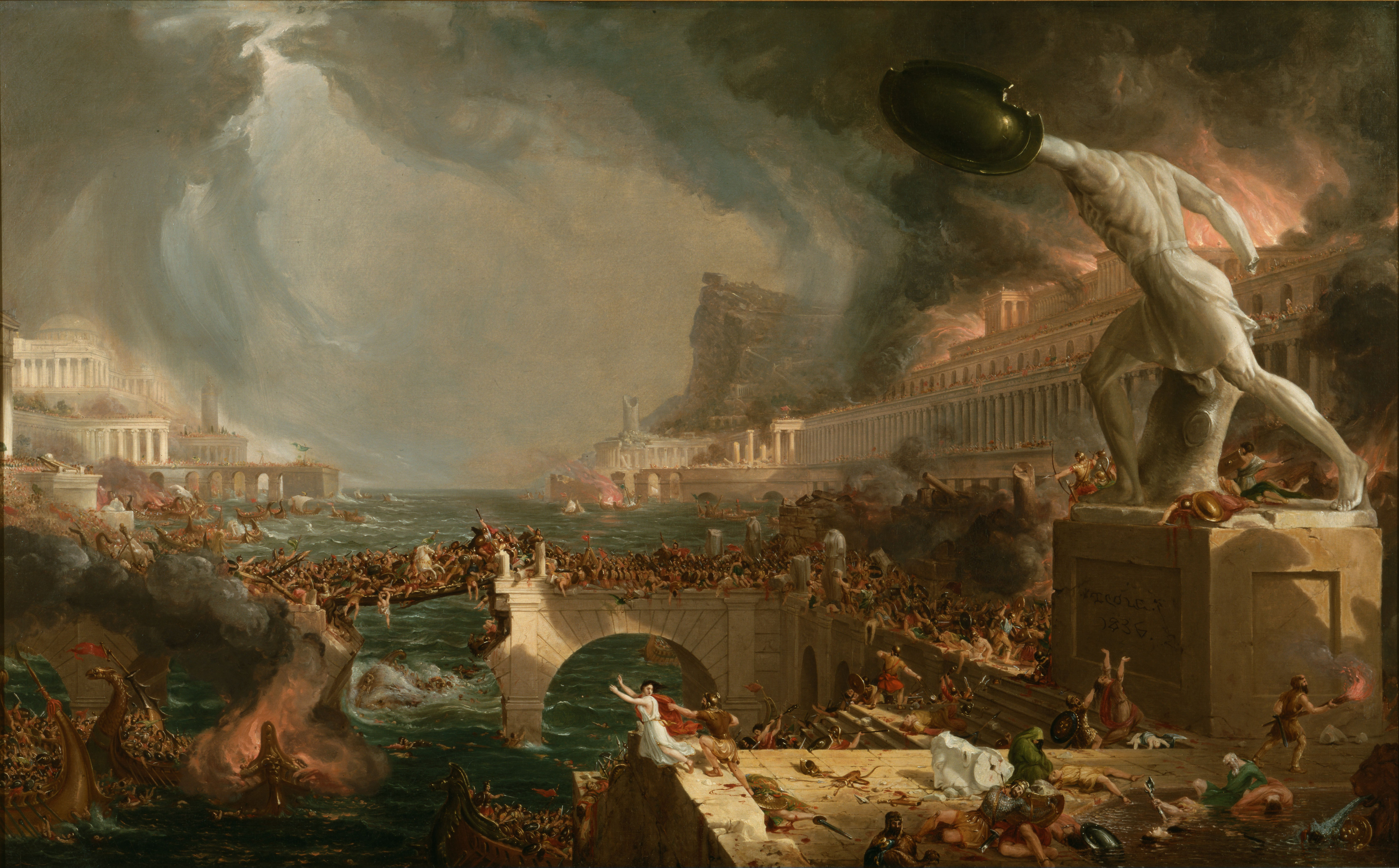The Rise and Fall of the Nephite Empire
One idea that will drive conventional historians screaming from the room is that civilizations have cycles. A lot of Americans have heard of the Strauss and Howe ?? theory on generational cycles. Peter Turchin is an actual historian doing work on historical cycles that you may have also heard of (He’s an elite overproduction theorist with a quantitative focus). Or maybe you’ve just seen the meme HARD MEN GOOD TIMES or Thomas Cole’s paintings on the Course of Empire.

But these are only the latest of many. From antiquity on, a number of independent thinkers from different starting points have hit on surprisingly similar versions of an overall civilizational cycle. There is a rise where the civilization is on a growth swing. The confident civ gets experimental with various cultural standards. The original unity is lost and there is quarrelling over the spoils. This goes on until the weakened civ goes under during a crisis.
The Book of Mormon has a pretty clear reflection of this cycle that its writers mostly seem to be unaware of. (This overall civilizational cycle is different from the pride cycle, which can occur at a much faster rate and on a much more local scale.)
It is obscured for us by the way the Book of Mormon splits up Nephites and Lamanites. A lot of Mosiah and Alma, for instance, looks like the Nephites are barely hanging on. But read more closely, its a huge expansion phase for Nephite civilization. The Nephites take over the Mulekites. Noah’s wicked priests bring the Lamanites into the Nephite cultural sphere (Nephite writing, commerce, record keeping, and other practices). The Lamanites are largely converted to one of the Nephite religions (just not always the right one). Nephites take over the Lamanite kingdom (the dissenters). Nephites settle the land northwards. Nephites send out boat colonists to settle even further. There appears to be massive amounts of wealth floating around generated by all of this.
For context, imagine if someone from Mars had a history written by a narrow British nationalist who called everyone outside Britain foreigners or even Welsh. He starts off by talking about small raids and conflicts with the Welsh, then Wales is incorporated, everything seems OK, the British are expanding overseas, then everything is great. Then all of a sudden the North American colonies are conquered by the Welsh. Eventually everything is lost to the Welsh. When this Martian comes to Earth, the Martian will be surprised to find that America and Australia and Canada are English-speaking, with English laws and customs and largely even English stock, and English is the language of international everything.
I believe in civilizational cycles. But I don’t quite see it as just rise and fall, not at the civilizational level. The late Spengler scholar John C. Reilly pointed out that after the initial fall a civilization often recovers and has something like a quiet golden age. He calls it “the long summer afternoon.” The initial energy for growth and innovation won’t necessarily still be there. But there can be peace. Take Rome. The late Republic end’s was clearly a fall and it never got fixed. When Augustus kept the forms of Republican rule but made no attempt to go back to the reality, it was clear that the old Rome of yore was dead. At the same time, he touched off a period of peace and prosperity that lasted through the 5 Good Emperors and arguably until the crisis of the 3rd Century. Trade flourished, the population grew, there was still vital art and literature, cities were made lovely, and wealth grew. The archaeological record leaves little doubt.
These civilization cycles are not the Book of Mormon’s pride cycle. So it is all the more surprising that Nephite historians who weren’t aware of other cycles still recorded the pretty good evidence that the Nephite civilization followed that same arc. They have an expansion phase then fall apart, but have a second act of 200 years of peace when Christ comes before their final fall.
It looks like Nephite civilization was roughly 50 years off the Roman one according to these correlations. If so, the event that corresponds to Cumorah was Constantine the Great and the move from Rome to Byzantium.
That said, these are rough correlations, you could equally peg the end of the Roman good period with the Year of the % Emperors in 193 A.D. or the Crisis of the 3rd Century after Severus died in 211 AD. Or you could date the end of the Nephite good period to the split into churches in 210 AD or even the withdrawal of the Three Nephites many decades later. Don’t take the 50-year offset very seriously.
Conclusion: Nephite civilization follows what I think is the best model for civilizational rise and fall, one unknown to Nephite historians.
This will not be a testimony to 99% of our good friends here. But it is a testimony to me.
I believe that our own civilization is in its Late Roman Republican phase. It’s beautiful to think that better days could be ahead